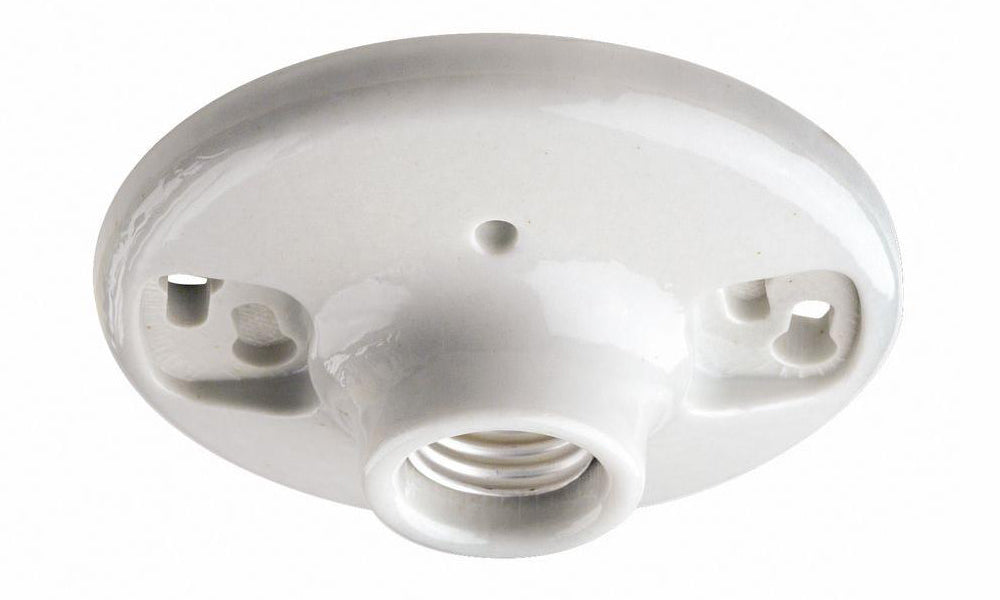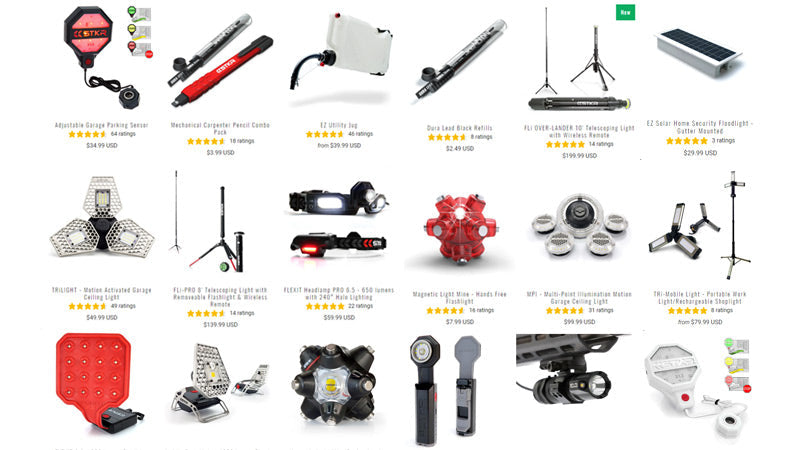
What Size Is a Standard Light Bulb Socket?
Share
Light bulbs come in different shapes and sizes. When we think of lights, bulbs and lamps are often the first things that we think of. But it is also important to remember that bulbs are generally paired with a light bulb socket.
The standard light bulb falls under the A group with a diameter of 1/78 inch to 3 1/8 inches and uses the E26/E27 base. Arbitrary bulbs fit on medium-sized sockets. That’s the standard size, especially in American homes.
Learn more about light bulb sockets and how standard bulbs should fit right through them in the next few lines.

What Is the Most Common Light Bulb Socket?
The most common light bulb socket for a standard bulb is E26/E27 medium screw. E26 bulbs are regularly used in North American households.
The letter E in E26/E27 stands for Edison, named after Thomas Edison, the person credited for the popularity of bulbs, particularly the incandescent bulb. The letter also pertains to the mechanism in which the bulb fits the socket. So, for example, E means that the base is a screw cap.
On the other hand, the number 26 or 27 pertains to the diameter of the base or socket in millimeters.
Since there is only a 1-millimeter difference between E26 and E27, you can use these sockets interchangeably. They also accommodate bulbs of different sizes.
Overall, you can rely on an E26 or E27 for standard house lightings like lamps, ceiling light fixtures, outdoor spotlight, floodlights, and even vanity lights.
To sum it up, here is a simple guide of the light bulb bases you can use as a reference when buying a socket.
- Medium Base – A screw-in base denoted by the codes E26 or E27
- GU10 – This is a twist-and-lock base
- Bi-pin – This is a pin-in base represented by the code G4 or GU24
- Candelabra – Another screw-in base similar to the medium type except that it is smaller. The code E12 represents it
- Bayonet – This base has two pins and needs a push and twist maneuver to fit the socket

What Are the Different Types of Bulbs?
Light bulbs have evolved throughout their history. While the original bulb designs are still around, a lot has been improved in energy consumption, brightness, etc. Here are three of the standard bulbs you can choose from.
-
Incandescent Bulb
The invention of the incandescent bulb revolutionized the lighting system during an era where electricity was at its birth.
In this device, the light is generated as the electric current passes through a tungsten filament. The increased temperature leads to the emission of light. However, incandescent bulbs fall below the top choices for light sources as they are regarded as inefficient.
-
CFL
Compact fluorescent lamps (CFL bulbs) take after a standard incandescent bulb but with the features of a fluorescent tube. As a result, CFLs are more energy-efficient than incandescent bulbs. The light is produced through the interaction of the electric current with that of argon and mercury vapor.
-
LED
Light Emitting Diode (LED) is all the rave when it comes to modern light bulbs. Unlike the CFL and incandescent bulb, LED bulbs rely on a diode to emit photons. The electrons move through a semiconductor which then triggers light emission from the diode.

What Are the Standard Light Bulb Shapes?
There are different light bulb shapes available for multiple applications. You can check the type of shape in the codes indicated in the bulb. It is represented by a letter. Sometimes you can encounter a group of letters. This often represents the reflector type.
Check out the following bulb shapes you can choose from.
- Arbitrary or Standard Household (A)
Bulbs with arbitrary shapes are considered to be the standard ones used at home. These bulbs have an E26 to E27 medium screw base.
- Candle (C)
The candle bulbs have a conical shape that looks like a candle flame. These bulbs are commonly found in chandeliers, pendant lights, wall sconces, and decorative lights. Aside from the standard E26/E27 medium screw base, the candle bulbs also come with E12 candelabra and E17.
- Blunt Tip (B)
The blunt tip bulb is closely similar to candle bulbs. However, they are shaped more like a torpedo or a bullet. Their base types are also the same as the candle bulbs, as well as their common purpose.
- Globe (G)
The globe bulbs come in round shapes that still come in several variations. They come with E26 to E27 medium screw base or E12 candelabra.
- Tubular (T)
Tubular bulbs are elongated and go outside the typical shape of a standard bulb. They are often used for lighting the basement or garage. The bases of tubular bulbs include the G13 bi-pin, BA15D bayonet, E17, E12, and the standard E26/E27 medium screw base.
On the other hand, if you encounter letters in the codes that come in pairs or by 3s, they usually denote the presence and forms of reflectors.
Types of Reflectors
- Bulged Reflector (BR)
- Reflector (R)
- Mini Reflector (MR)
- Multifaceted Reflector (MR)
- Parabolic Aluminized Reflector (PAR)

What Are Standard Light Bulb Sizes?
Standard light bulb sizes belong to the A group classification. It ranges from bulb sizes 1 7/8 inch to 3 1/8 inches in diameter.
If you check a light bulb, you will see that it contains a letter or a series of letters along with a number. These are codes that describe the characteristics of the bulb.
The letter or letters pertain to the shape of the bulb. It can also indicate special attributes like reflector type.
On the other hand, the numbers refer to the size of the bulb. It can be in eights of an inch or millimeters.
The A group contains the arbitrary bulbs commonly used in household lighting devices like lamps, ceiling light fixtures, vanity lights, kitchen lights, closet lights, outdoor lanterns, and porch light fixtures.
Aside from the A group, the G group fits a lot of common light bases. These bulbs come in a variety of shapes and sizes.
The smallest is G11, with a measurement of 1 3/8 inch in diameter, while the biggest has a diameter of 3 ¾ inches. These bulbs can be used in plenty of light applications at home, such as chandeliers, ornamental lights, foyer lights, and kitchen lights.
Alternative Lighting Devices
While light bulbs remain fashionable in many homes, you can make any lighting installation easier if you consider other alternatives.
Here are some lighting devices from STKR Concepts you can use in your home for illumination aside from the good old bulb.
A single bulb often produces light in one direction or with limited brightness intensity. With the MPI, you can light the entire room using just one E26 bulb fixture.
The MPI has 7500 True Lumens, which measures the level of illumination it produces. And with those numbers, you can expect light to spread to all corners of the room as a standard bulb is usually in the 800-lumen range.
To learn more about Lumens, check out our brightness article here.
MPI has five bulb fixtures, one main light, and four pod lights. You can easily twist in the main light into a standard light socket and then install the mini pods using the two screws each wherever you need the light up to 9.5” away from the base.
The TriLight is made of LED lights distributed on three adjustable aluminum plates. You can easily twist the TriLight into a standard bulb socket. However, its design goes beyond the standard bulb, enhancing the spread of illumination.
Anyone can install the TriLight with its screw-in design. As the plates are made with LED, it is energy efficient and significantly brighter at 4000 lumens!
Summary
It’s no trouble to find a light bulb socket that matches the bulb you like as long as you are familiar with the light bulb of your choice. Finding a bulb with a suitable base can easily be done if you know the right size of the fitting cap.
But to save you from any further trouble, you can always go for modern lighting devices that do not require the manual assembly of the lighting fixture.
Not only will it save you time and energy, but you can also enjoy illumination that goes in multiple arrays.




